Tourism Actors Discuss Thandaunggyi’s Community Tourism Development
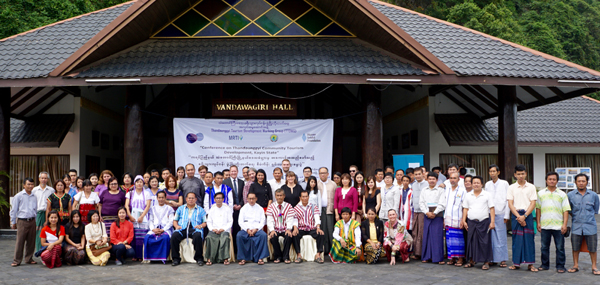
Group Photo of Conference Participants at the conference on “Thandaunggyi Community Tourism Development” in Hpa An.
HSF
The conference attracted interest with a diversity of communities and groups working on community(-based) tourism development, including Kaya and Chin State, Thanintharyi and Ayeyarwaddy region, Myaing, Gaw Yin Gyi Island, etc. Furthermore, Representatives of (I)NGOs, governmental authorities and Ethnic Armed Organisations as well as tourism professionals, listened to and discussed with the 18 members of the Thandaunggyi Tourism Development Working Group their experiences and challenges over the past two years.
Thandaunggyi, one of the pilot projects of community tourism and peace building in post-conflict areas in Myanmar, has a successful history in participative community tourism development, including the establishment of a local specialized working group, the Thandaunggyi Tourism Development Working Group – TTDWG. The working group’s implementing body consists of 18 members, including community and business leaders, women and youth.
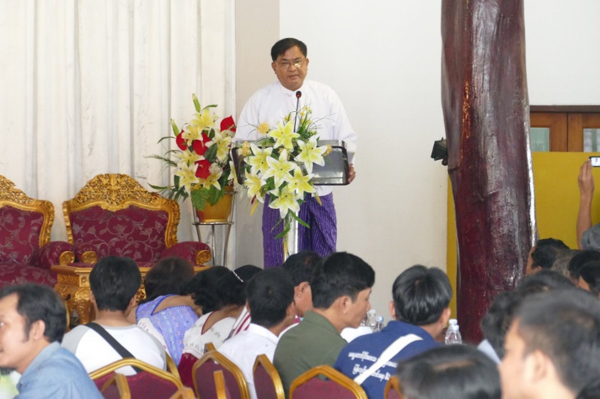
Kayin State Minister of Planning, Finance and Development, U Than Naing during his opening Remarks.
HSF
The conference was organized by the Hanns Seidel Foundation (HSF) and Peace Nexus Foundation (PNF), with the support of the Ministry of Hotels and Tourism Myanmar (MoHT) and the Myanmar Responsible Tourism Initiative (MRTI). These actors are working closely with the TTDWG and provide support through facilitation with stakeholders, technical advisory, such as human resource and product development, to develop tourism in the community.
The opening remarks were led by Kayin State Minister of Planning, Finance and Development, U Than Naing, who emphasised the importance of the East-West-Corridor and open borders to Thailand as well as the upgrading of roads, sanitation, hygiene and safety to promote ecotourism development. U Zayar Myo Aung, Director of the Tourism Promotion Department of Kayin State, furthermore highlighted the many attractions of Kayin State, its natural beauty, caves and mountains and religious sites and later provided an overview on current community-based tourism projects in Myanmar.
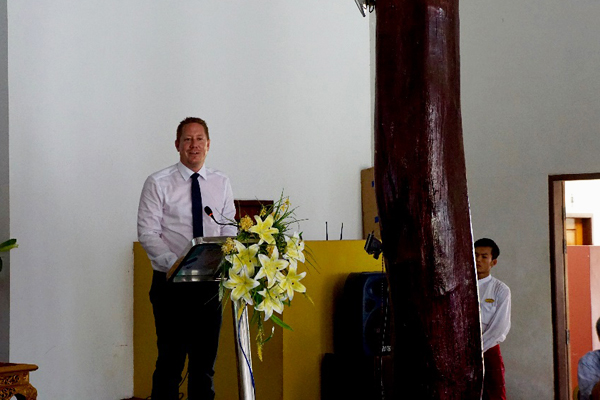
Achim Munz, Resident Representative of HSF Myanmar highlights the potential of CIT for Myanmar.
HSF
U P’Do Saw Mya Maung from Kayin National Union, Central Executive Committee, explained the choice of Thandaunggyi as part of the political process on peace building. He concluded that community tourism development through B&Bs supports the new government’s focus on SME development.
Achim Munz, Resident Representative of Hanns Seidel Foundation Myanmar highlighted the potential of community involved tourism for the peace process and for the economic development of Myanmar. “On the local level entrepreneurial spirit will make the difference. The job of non-governmental organizations is also to unleash the potential and support the communities in their initial business activities.”
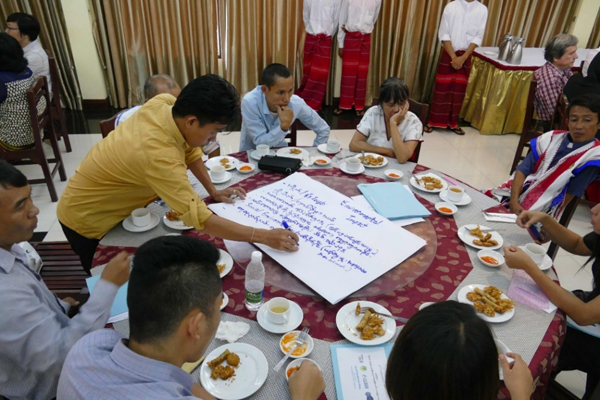
Actively involved participants during a group work session.
HSF
Members of TTDWG presented firstly Thandaunggyi’s attractions and how tourism infrastructure has developed since local community members and members of the government and Ethnic Armed Organizations established the group in late 2014. The group shared the process how they achieved B&B licenses and highlighted the various trainings and exposure trips they participated in. Their vision and objectives focus on responsible ecotourism development that supports a peaceful co-existence in the region, community development, environmental awareness and protection, and maintaining Kayin culture. Peace building, B&B and Service Development, inclusive community development, tourism infrastructure development and knowledge sharing were presented as main achievements.
Limitations and challenges faced during these two years formed an important part of the knowledge sharing session of TTDWG, presenting also how they dealt with these challenges and the lessons learnt. Some of these challenges were later discussed during working group sessions, which included topics like integrating communities in tourism development, private-public partnership, safety and security as well as environmental impacts and waste management. The group also shared their plans on future activities.
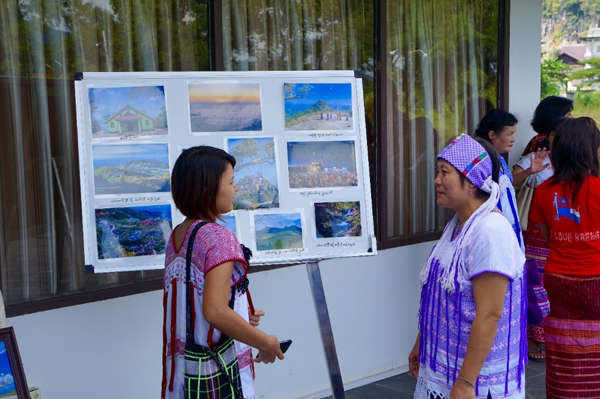
Community members from Thandaunggyi presenting their Tourism Involvement.
HSF
Participants questioned during discussions for example how to successfully start community tourism development and get the support of the community, how to deal with negative impacts, or how to share knowledge and spread benefits to a wider community. There are important messages from this conference to be learned: there is a need for an improved regulatory framework so that stakeholders can understand community(-based) tourism development in the context of Myanmar. Participants also mentioned that tourism development needs a “sense of adventure”, “leadership” and “entrepreneurship” of the local communities and a supportive administrative structure. Tourism development in communities, in particular in post-conflict areas, needs to have a long-term perspective and should be tailored to the needs of the individual community. Each community has its own story, people and attractions. It is this diversity that makes a destination a unique and attractive experience for tourists.
